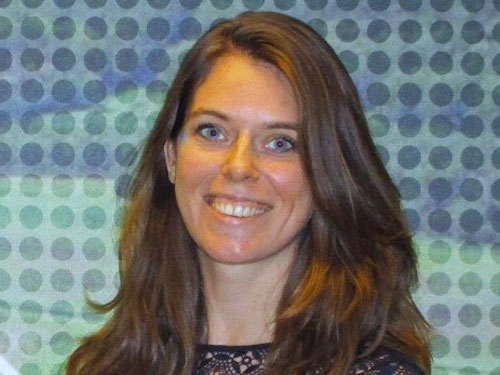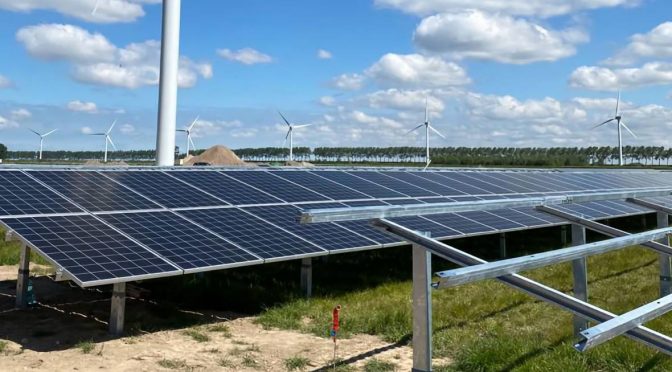With proper planning and ecological strategy Vattenfall’s solar power farms can contribute to a wider range of plant and animal life. 2020-06-18 Clemens van Gessel #Solarpower#Biodiversity
In 2020 and 2021, Vattenfall will invest around EUR 50 million in solar power and energy storage. When developing a solar farm a number of measures to reinforce ecology and biodiversity is incorporated in the project.

The Solar Development team has three elements to consider with regard to natural conditions: choosing a location, solar farm design and pursuing an ecological strategy.
Step 1: Choosing a location
“Vattenfall follows the guidelines of the ‘Onshore solar code of conduct’ issued by industry association Holland Solar. This means that we do not develop projects within the EU’s Natura 2000 areas, and we always work in dialogue with the immediate environment as well as other stakeholders to look at how we can integrate the project into the landscape as effectively as possible,” Sanders says.
As an Community & Stakeholder Manager, he ensures Vattenfall speaks to the concerned stakeholders when developing solar farms and that their interests are taken into account.
While the Solar Development team will often go into the field to seek out a suitable location, they may also be contacted by parties who have already identified an ideal location, but who require a partner.
“Now that regional energy strategies are being set out throughout the Netherlands based on the National Climate Agreement, many municipalities are working to find potential sites for solar farms. We then look at these sites to determine which ones are the most technically and economically viable – and how well they can be integrated into the landscape.”
Ultimately, all parties that participate in a solar park will gain. Vattenfall supplies green energy, the landowner of the solar park receives rent for his land and local residents can take advantage of various offers.
“For example, they can invest, buy green energy themselves or we deposit an amount in a fund that sponsors local projects in the field of sustainability. What I enjoy most about my work is the joint search for those win-win situations for both the local community and Vattenfall,” says Sanders.
Step 2: Solar farm design
After the site has been chosen, the engineers start looking at how they will design the solar farm. The greatest threat to biodiversity comes from an installation casting too much shadow. Virtually all plants require a certain amount of sunlight per day. Some plants can grow even if they receive less than three hours of sunlight or if the light is diffused , through trees or foliage.

“Installing the panels the right way, among other things ensuring optimum drainage, requires a balance between the inclination angle of the panels themselves, the distance between the individual rows, and the height of the panels. It is not recommended to have a whole field full of solar panels, as this inhibits plant growth and therefore reduces biodiversity.”
Step 3: Pursuing an ecological strategy
As a unique ecological strategy is required for every location, Vattenfall works with various (often local) partners – such as ecological consulting firms, nature and environment organisations and knowledge institutions – that advise on the best design and recommend nature and landscape management measures.

“Each site is unique, which is why we work with local partners to develop a plan that contributes to a balanced ecosystem,” explains Annemarie. “For example, we make decisions based on their recommendations on how to ensure a healthy mix of local indigenous plants and flowers that have a positive influence on insect, reptile, bird and small mammal populations. We do not use any fertilisers or chemicals, we allow grazing animals to use the site in autumn and winter, and we install bee hotels and birdhouses where possible.”
Agreements are reached with landowners that after 25 years (the approximate useful life of solar panels) the land will be used for agricultural purposes once more. “In 25 years, the land – initially characterised by monoculture – becomes a spot with a huge amount of biodiversity,” Schouten says. “Thanks to a minor additional investment, Vattenfall can therefore have a major impact on natural surroundings.”
Facts
Vattenfall will invest around 500 million SEK (around EUR 50 million) in solar and batteries during 2020 and 2021. At the moment Vattenfall is constructing two large solar farms.
In Dutch Haringvliet Vattenfall is constructing a combined solar (38 MW), wind (22 MW) and battery (12 MW) hybrid power farm that will be completed in October this year.
In Uppsala, Sweden, Vattenfall will construct one of the country’s largest solar power farms, commissioned in September 2020.


